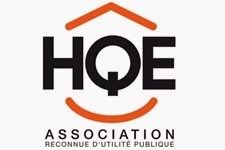
In 1996, the High Quality Environmental Association – HQE
creates the Green and Sustainable Construction Certification Scheme of the same name, which was adopted by the French Green Building Council.
The five basic principles – holistic approach, adaptability, best performance, technical expertise and transparency of activity make the HQE certification scheme special.
A holistic approach
certification involves the inclusion of different criteria that focus on the natural environment and consumers, treating them equally. The criteria are for each phase of the life cycle of an object. They are applied from the moment of its design to its management and enable the recognition and implementation of the appropriate measures to reduce the negative impact in the environment.
The criteria
are sufficiently general to allow them to be adapted to the different cultural and climatic fields and national laws of different countries, without the risk of adversely affecting the end result. In order to achieve the minimum of indicators, a project must meet at least seven out of fourteen criteria.
Indicator evaluation methods belong to a new generation of indicators compatible with international standards, which are recommended by the Sustainable Building Alliance (SBA) and the European Committee for Standardization CEN TC 350.
Activity transparency
of the Certivéa certification body is guaranteed by an audit committee, which is independent of the applicant for the certification and engaged by the Certivéa organization, and impartially evaluates all phases of the project. The decision to award the certificate is taken by Certivéa, with the consent of a special body composed of construction experts, investors, tenants and other interested parties.
HQE certification
covers all types of non-residential properties – from office buildings, industrial, health, educational and to commercial establishments and hotels. The fourteen criteria on which this certification scheme is based cover two broad themes related to sustainable development: controlling the impact of the environment under construction and creating a welcoming environment indoors.
According to this certification scheme, construction is assessed as environmentally friendly, depending on the interaction between the building itself and the environment, but also taking into account the degree of environmental impact of the site during the construction process and the choice of materials and systems used.
This means that from the first activities of the site to the demolition or renovation of the site, the contamination of water resources due to sedimentation and soil erosion, as well as the disturbance of local ecosystems, due to poor characteristics of materials and structures that accelerate excessive heating, should be prevented. and CO2 emissions.
Building management
management of energy, water, maintenance and control of waste in the process of use. When it comes to efficient use of water, these criteria will be met by implementing a system for separating drinking water from water for irrigation systems and facilities, thus reducing the possibility of contamination of water resources. Sustainable management is also aided by systems that generate energy from renewable sources.
Healthy and comfortable environment
for occupants of the building is a goal that is achieved by analyzing and evaluating the factors for the sanitary security of water, air and soil, as well as by assessing sound, visual and olfactory comfort. Passive methods of wind and noise protection and natural ventilation within the architectural solution are favored in this regard.
These criteria
are embedded in the HQE certification scheme and are grouped into four categories:
- eco construction (concerns the environment)
- eco management (concerns energy, waste water and maintenance)
- comfort
- customer health
Within these categories, the response to each criterion is evaluated individually, compared to successful practices, and accordingly a bon – B or tres bon performance – TP (good or best features) is obtained at each stage of the project.
The categories
they can receive up to four credits and their total number gives the overall assessment of the building’s sustainability.
The ratings are:
– bon (up to 4 credits)
– tres bon (5 to 8)
– excellent (9 to 11)
– exceptionnel (more than 12)